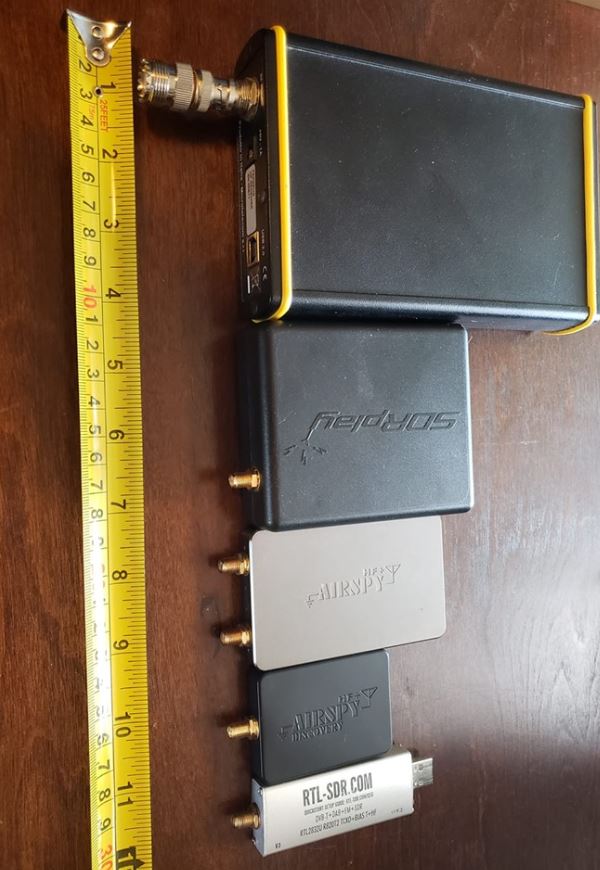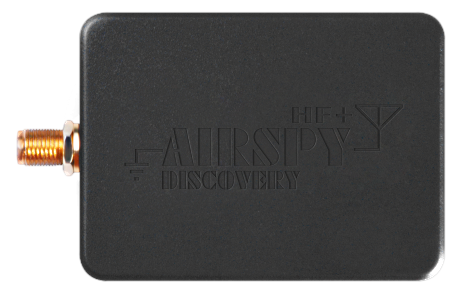Many thanks to SWLing Post contributor, Ivan NO2CW, who shares the following:
I did this video where I compared the two Airspy editions [HF+ and the new HF+ Discovery] only calling them Receiver 1 and Receiver 2:
Click here to view on YouTube.
Using the same W6LVP loop. 3 PM local time daytime propagation. Testing on Medium Wave and Short Wave, no VHF. AM broadcast signals only.
Ivan also included an image comparing the size of the HF+ discovery with other popular SDRs:

From top to bottom: the Microtelecom Perseus, SDRplay RSP, AirSpy HF+, Airspy HF+ Discovery, and the RTL-SDR.com SDR dongle.
When I demo the AirSpy HF+ to radio clubs, folks are amazed that such a tiny SDR can provide benchmark performance. It’s hard to believe the HF+ Discovery might even provide more performance from an even smaller package!
Thanks, Ivan for sharing these comparisons!


Receiver 1 was HF+ original and Receiver 2 was Discovery
I use my HF+ with an amplified preselector that has a bypass switch if I don’t need it inline. I get all the raw sensitivity I need. If the Discovery is more sensitive, is its signal to noise ratio and dynamic range any better?
I have also noticed that my SDR Play RSP2 is more sensitive than the HF+ on VHF and FM broadcast band, so different bands could perform better or not on the Discovery.
Interesting but I would agree that more tests are needed. I tend to like reviews that are not blind tests but where the reviewer uses the recordings to point out specific strengths or flaws. This blind testing is frustrating and wastes my time!
This is interesting — the new Discovery has received some rave reviews, but in some of these comparisons it is very difficult to tell what the significant advantage is over the older HF+
Sorry, I think I see now it was a “blind” test so remains a question which SDR was which…
Hi Dan, a medium wave DXer friend of mine commented that he suspects the polyphase tracking (present in both receivers) is more relevant at MW. This might mean that the Discovery is not much better for medium wave than the HF+ unless there are strong signals above 5MHz…maybe FM? I think the Discovery should shine with weak signals on shortwave in high signal strength locations, but on MW the two radio may prove to be identical. More user comparisons needed.
With the Discovery it’s one antenna input for all covered frequencies, so, maybe much of the preselector is just a way to create one antenna input instead of the previous two. This cuts the cost, reduces the parts count, and makes for a smaller package.